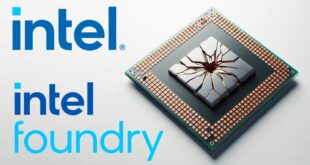There are many legitimate reasons to trade in gold and its derivatives. Gold has been proven time and time again to be an excellent “safe haven” investment, a holding that will appreciate in value during times of economic uncertainty. As such, gold may offer some valuable hedging and diversification benefits for a long-term portfolio. A number of exchange-traded products offering exposure to gold prices but not all gold ETFs are created equal. Here’s a quick rundown of factors to consider when making an investment in a gold ETF. Words: 1268
proven time and time again to be an excellent “safe haven” investment, a holding that will appreciate in value during times of economic uncertainty. As such, gold may offer some valuable hedging and diversification benefits for a long-term portfolio. A number of exchange-traded products offering exposure to gold prices but not all gold ETFs are created equal. Here’s a quick rundown of factors to consider when making an investment in a gold ETF. Words: 1268
So says the Andy Hagans (www.etfdb.com) in an article* which Lorimer Wilson, editor of www.munKNEE.com (Your Key to Making Money!), has further edited ([ ]), abridged (…) and reformatted below for the sake of clarity and brevity to ensure a fast and easy read. The author’s views and conclusions are unaltered and no personal comments have been included to maintain the integrity of the original article. Please note that this paragraph must be included in any article re-posting to avoid copyright infringement.
Hagans goes on to say:
Gold is an effective “dollar hedge” – it tends to rise as investors become uneasy with the idea of keeping their holdings tied up in the U.S. currency… Five years ago, it was difficult for investors to efficiently invest in gold bullion but the development of the ETF market has changed that. Gold ETNs and ETFs are an efficient way to invest in the metal without dealing with the associated “headaches” of holding a physical amount of gold in your possession…
How Gold ETFs (and ETNs) Work
Since gold is a commodity, many investors assume that gold ETFs are essentially identical. While there are a number of factors that make the various gold ETF products unique, the most important is the manner in which they achieve exposure to gold prices.
1. Some gold ETFs buy and physically hold gold bullion (i.e., they have massive collections of gold bars) and track the spot price of gold very accurately because the value of the underlying holdings depends solely on the market price of bullion. Examples of such ETFs are as follows:
a) SPDR Gold Trust (GLD) – MER of 0.40%
b) iShares COMEX Gold Trust (IAU) – MER of 0.40%
c) ETFS Physical Swiss Gold Shares (SGOL) – MER of 0.39%
2. Some ETFs invest in futures contracts which track the spot price of bullion closely but may deviate occasionally due to phenomenons such as backwardation and contango in commodity futures markets. Some examples of such ETFs are:
a) PowerShares DB Gold Fund (DGL) – MER of 0.50%
b) UBS E-TRACS CMCI Gold Total Return (UBG) – MER pf 0.30%
For investors with significant gold holdings, diversification across custodians and geographies may be desired as well. While a repeat of the U.S. gold confiscation of 1933 is unlikely, it isn’t completely impossible. Some investors may sleep better at night knowing their gold is securely stored in multiple locations in different parts of the world. For this reason, London-based ETF Securities offers an ETF that stores its gold in Switzerland, a country long known for being friendly to investors.
Gold bugs will also see the benefits of diversifying their holdings across custodian. While the likelihood of any shenanigans involving gold holdings is incredibly remote, the last two years have taught us to never count anything out. JP Morgan serves as the custodian for SGOL, while HSBC and the Bank of Nova Scotia serve as custodians for GLD and IAU.
Precious Metals ETFs
In addition to ETFs that invest exclusively in gold, there are two precious metals funds in the U.S. (and a number in Canada) that offer exposure to both gold and silver utilizing futures contracts to tract the price of a basket of precious metals that is tilted heavily towards gold. The American ETFs are:
a) PowerShares DB Precious Metals Fund (DBP) – 80.0% gold
b) iPath Dow Jones-UBS Precious Metals ETN (JJP) – 68.5% gold
“Indirect” Gold ETFs
For investors who are uneasy about investing directly in commodities (or futures contracts on commodities), there are ways to gain exposure to gold prices while sticking to equities as follows:
a) The Gold Miners ETF (GDX) is based on an index that provides exposure to publicly-traded companies engaged in mining for gold. Because the revenues of these companies are directly related to the market price for gold bullion, there tends to be a strong correlation between these equities and gold prices. Since GDX was launched in May 2006, it has maintained a correlation with GLD of approximately 0.35.
b) The Junior Gold Miners ETF (GDXJ), with an expense ratio of .60%, focuses on equities of small- and mid-cap companies engaged in the development of new sources of gold either through greenfields exploration or the use of new geological models to search for gold in overlooked and abandoned areas.
c) The Hard Assets Producers ETF (HAP) which, while offering limited exposure to companies engaged in the precious metals business, is more heavily tilted towards energy and agriculture companies.
Leveraged And Inverse Gold Exposure
The options for investing in gold through ETFs don’t stop with “plain vanilla” long funds. While many long-term investors will want to hold a small amount of gold in their portfolios, yellow metal isn’t exclusively for buy-and-holders. Speculators with strong opinions on short-term price movements of the “yellow metal” There are several exchange-traded products that offer leveraged and inverse exposure to gold prices, namely:
a) PowerShares DB Gold Double Long ETN (DGP), 200%, Monthly
b) PowerShares DB Gold Double Short ETN (DZZ), Inverse -200%, Monthly
c) ProShares Ultra Gold (UGL), 200%, Daily
d) ProShares UltraShort Gold (GLL), Inverse -200%, Daily
e) PowerShares DB Gold Short ETN (DGZ), Daily
*http://etfdb.com/2009/the-definitive-gold-etf-guide-five-minute-edition/
Related Articles:
1. All Gold and Silver ETFs are NOT Created Equal! Here’s the Best
Whole oceans of ink have been spilled detailing the good and not-so-good points of the closed-end fund CEF (Central Fund of Canada) and the twin ETF’s GLD (SPDR Gold Trust) and SLV (iShares Silver Trust) funds. My goal here is to distill the salient points down to the fewest words possible to help make your due diligence task somewhat less…well…tasking. [Let’s go!] Words: 650
2. Surprise! A Close Look at GLD Reveals What it IS and is NOT
The most common misunderstandings regarding the primary gold ETF, SPDR Gold Trust (NYSE:GLD) is that it buys and sells gold. That is not the case. It is just a paper asset. It is not a way to buy gold and have someone else store your holdings for you. It is just an innovative way to “own gold.” [Below I outline more of just what GLD is and is not:] Words: 1470
3. All Gold & Silver ETFs Are NOT the Same: a Lease vs. Own Comparison
I have always been leery of the two big exchange traded funds, SLV and GLD, because they lease the gold and silver that they sell you. I much prefer the ETFs SGOL, CEF, PSVL and PHYS which actually own the gold and silver they sell you and store it for you segregated vaults. Words: 717
4. Why GLD Is My Choice Over Every Other Stock and ETF
Investors are looking for a safe place to put their money – an asset class they can “touch” and possibly trade even when no organized marketplace exists. That of course is the worst-case scenario and I do not believe it will get that far but the possibility is there and gold seems to achieve peace of mind for investors at the moment. As such, for me, GLD would be the only stock or ETF I would buy if I could own just one. Words: 862
 munKNEE.com Your Key to Making Money
munKNEE.com Your Key to Making Money


